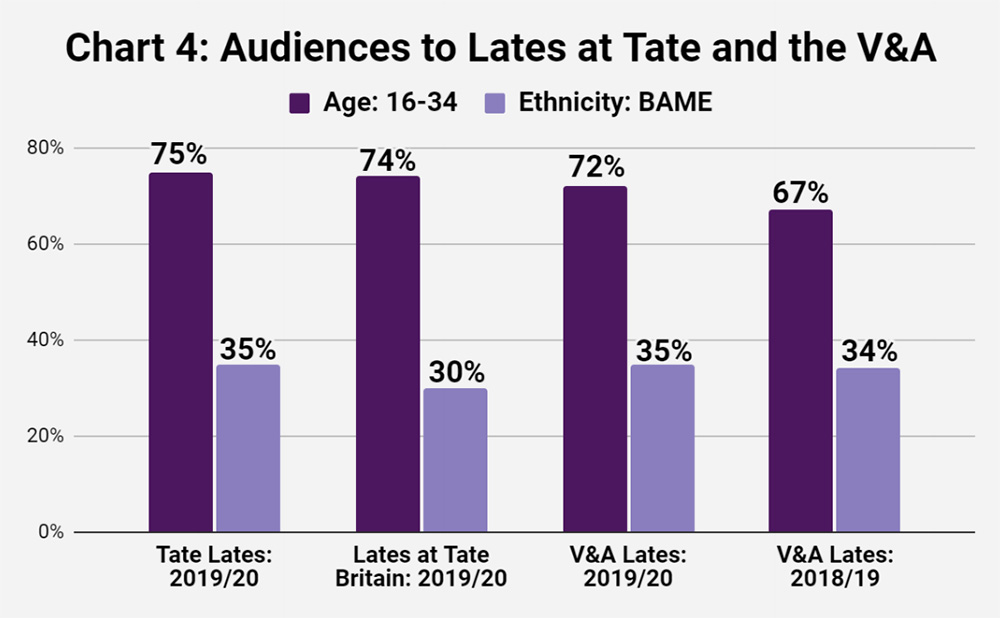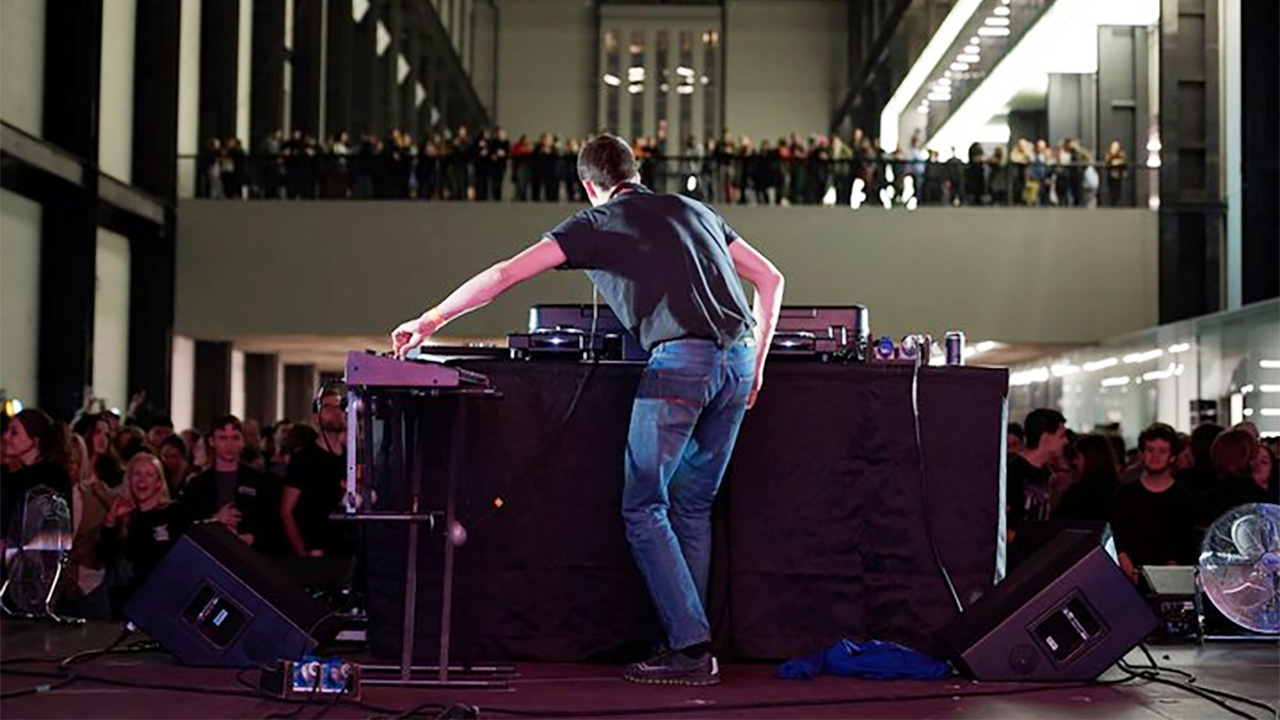In 2020, the combined effect of a pandemic and a global social reckoning upended the traditional museum model, calling for deep introspection on the part of institutions into how they might center inclusivity and equity. Programming and practices aside, the recognition that museums need to engage a more diverse audience has been key to ensuring their continued relevance within their communities.
And they have a long way to go. The UK’s Department of Digital, Culture, Media and Sport found that museum visitation in 2020 skewed middle-aged, while recent statistics by the Arts Council England showed that the proportion of museum-goers who identified as people of color is decreasing annually.
In response to this demographic crisis, Culture24, a consultancy funded by Arts Council England, recently released Rap Under The Rubens, a report investigating one key strategy in attracting a broader audience: after-hours programming. Referred to as “Lates” in the report, these events encompass a range of activities that museums can provide outside of normal daytime operations, which can help reshape the traditional art institution into a more inclusive space while navigating pandemic-imposed social distancing restrictions.
The Culture24 report examines interviews with museum professionals, annual reports, mission statements, and quantitative data from after-hours events held by the Tate Modern, the Melbourne Museum, Culture24’s Emerge Festival, and the Amsterdam-based Museumnacht festival to develop an understanding of how Lates can help museums respond more effectively to diverse and often underserved communities. Here are the three main takeaways from the report.
Engaging a young and diverse crowd

After-hours programming and longer opening hours, the report found, could provide a much-needed entry point for a younger and more diverse audience. Image: Culture24
The report’s data gathered on Lates by Tate Modern, Tate Britain, and V&A consistently reflect how after-hours programming can help museums cater to the changing needs of a younger and more diverse crowd. In 2019, the Royal Academy reported that half of their 8,000 Lates attendees were under 35 and about a third were first-time visitors.
Groups aged 16 to 34 who identify as people of color or from lower socio-economic backgrounds have cited a lack of “feeling uncomfortable or out of place” and being time-poor as barriers to museum attendance. Strategies that museums have employed in their after-hours programming to combat these obstacles include assembling younger events teams who can quickly adapt to a dynamic visitor profile, appealing to a booming interest in live experiences by hosting performances by local artists, and holding events outside of the prohibitive 10-5 opening hours.
Recommendation: Museums should be proactively in involving young and diverse individuals in the planning and devising of engaging and relevant after-hours offers. Also vital: prioritizing strategic support for Lates programs and setting clear targets to improve representative audiences.
Community and collaboration

The annual Emerge Festival attracted a majority of first-timers in 2019; three participating venues reported 100 percent of new visitors and the lowest reported new visitor ratio was 21 percent. Image: Culture24
“By not having a representative audience,” the report cautions, “museums risk becoming increasingly less relevant to the public they are built to serve.” In short, there is a need for museums to recalibrate their identities relative to their local communities to avoid growing disconnected from younger, multicultural audiences. This is where collaborations with local organizations and performers can simultaneously inject fresh insight into traditional arts institutions while serving as a cultural bridge that connects audiences with formerly unwelcoming museum spaces.
Models like Emerge Festival, which invites museum-goers to after-hours events at cultural venues across London, have also shown that such large-scale partnerships benefit both institutions and audiences. They acquaint audiences with museums they might not have considered visiting before (and with a single entry ticket that grants access to multiple venues), while allowing institutions to test out new programs.
Recommendation: Museums should embrace community co-curation, and seek to feature new and emerging breakthrough acts that are products of local communities. Visitors want to play an active role in events and can benefit from socially-engaged partnerships.
Cost is not a significant barrier
While a debate continues to roil on whether cost is a barrier to museum visitation, one thing’s for sure: the report observes that audience participation in after-hours programming increased regardless of whether events were free or ticketed. Ticketed events such as Museumnacht and Emerge offered discounts for under-30 museum-goers and flexible pricing policies, allowing them to counter the challenge of balancing fair payment for collaborating performers with remaining attractive to audiences of lower socio-economic backgrounds.
Recommendation: To ensure cost doesn’t preclude participation, institutions could develop a flexible approach to pricing policies and experiment with different incentive schemes for after-hours programs.



